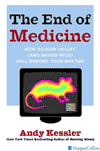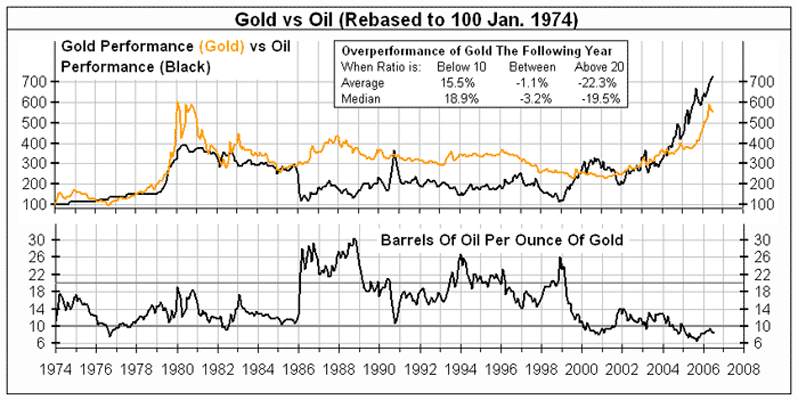| Home | About Us | Resources | Archive | Free Reports | Market Window |
|
Steve’s Note: Andy Kessler’s new book – The End of Medicine – came out this week. Kessler spent the last several years following doctors around, digging around research labs, going to imaging conferences and getting himself poked, prodded and scanned. He concludes cheap technology will enable huge medical advances so a lot less folks will suffer heart attacks, strokes or cancer going forward. You read it here first...
My First Taste of Silicon MedicineBy
Saturday, July 8, 2006
Cupertino could as easily be on the outskirts of any major city as it could be in Silicon Valley. Apple Computer is around here, but it’s mostly forgettable three or four story office buildings surrounded by gas stations and retail strip malls. It was like a tour of virtue and vice. For every Fitness Center, Jamba Juice and Holistic Center that I passed there was a Taco Bell, Carl’s Jr. and cigar store.
I pulled up next to a Mercedes S55 AMG - maybe it’s the doctor’s – and sat in the parking lot of a few minutes. My heart was pounding, and the butterflies in my stomach were migrating up to my throat. I was having trouble swallowing, let alone breathing. It wasn’t too late to bail. I pulled it together and wandered in. I was the only one in the waiting room and filled out the paper work to the sounds of some really cheesy radio station, Mix 106 or something equally lame. I paid with my Visa card and then sat down and looked for the Children’s Highlights magazine, but realizing I wasn’t at the dentist, instead, I found Sunset Magazine and an issue of Time Magazine with a cover story titled, ‘How to Stop a Heart Attack Before it Happens’. I’ll bet they bought out the newsstand. “Come this way, Mr. Kessler,” said an orderly, technician, or whatever you call someone in scrubs that doesn’t immediately introduce themselves as a doctor. He led me into a not particularly large room with the scanner. The machine was maybe 10 by 10 with a round opening and a gurney to lie down on. And a Bounty paper towel where my head was supposed to go. To mop up the bleeding? The machine said Imatron. They were the scanning company bought by GE back in 2001. I didn’t see any General Electric labels anywhere. Hmmm. “Any metal?” he asked. I took the pen out of my shirt pocket and put it near a sink along with my phone. “OK, just lift your shirt. I need to put on these three probes for your heart beat and we’re all set. Can you hold your breath for 30 or 50 seconds?” I nodded my head. “Great, this should take about 3 minutes. Put your hands over your head.” I watched a few lasers light up my torso. He must be aligning the thing. “OK, take a deep breath and hold it,” garb-man said. I held my breath and could feel my heart beating. And then a strange sensation. After each heart beat, the opening of the machine would move back slightly. Beat, move. Beat, move. Beat, move. I got a little spooked when it stopped moving, until I realized that we were done. “OK, you can collect your things and wait out in the lobby.” I picked my phone and pen and noticed about a dozen ants scattered along the counter. Either the staff all met for donuts that morning or had their own poker party in the scanning room over the weekend. Not a great sign. The procedure took all of three minutes but I sat in the lobby for another 30 waiting for Dr. Zander, rocking out to Barry Manilow on Mix 106 and then the damn butterflies started flapping again. Something must be wrong. The S55 was gone. I think I’m the only one here. They must be phoning an ambulance and the EMS team. I picked up another magazine and flipped through it looking for anything to take my mind off the pounding in my chest, most certainly caused by ever shrinking arteries. I found an article about a convicted killer, always a good diversion. On July 3, 1981, a petty crook Joseph Paul Jernigan was in the middle of stealing a microwave oven from the home of 75-year-old night watchman, Edward Hale. As Jernigan was sneaking out, Hale surprised him and Jernigan quickly stabbed Hale and then blasted him three times with a shotgun. I love these kinds of stories and quickly forgot about my potentially sclerotic ticker. Jernigan was caught, the book was thrown at him and he was sentenced to death by lethal injection. It took almost a dozen years of appeals and clemency requests, but at 12:31 a.m. on August 5, 1993, potassium chloride dripped into his veins. Jernigan had agreed to will his body to the Texas anatomy board, to spare his family the cost of a funeral. Pretty thoughtful. What Jernigan probably didn’t know was that within 90 minutes, his body was pumped with 5 gallons of formaldehyde and then whisked to a plane bound for Colorado. There, it underwent X-Rays, MRIs and CT scans. (Hey, wait a second, what kind of article is this?) Within a day of his injection, his body was packed in dry ice and stored in a meat locker. In February of 1994, he was cut into four big blocks, blue latex filled in hollow cavities like his lungs and stomach, and then Jernigan was systematically cut into 1,878 cross section slices, each 1 mm thick. The slices were quickly digitized, put on a CD-ROM and eventually became part of something called the Visible Human Project and on the web at the National Library of Medicine’s website. I was just about to turn the page to look at pictures when… “Mr. Kessler?” a voice interrupted. “Uh, that’s me.” Not that anyone else was there. I was happy to put down the article. “Hi, I’m Dr. Zander,” a nice 60 something year old man said extending his hand. I looked for a sign of anything on his face. Nothing. Poker cold. Damn. “Come on in.” He led me to his office which had a huge LCD monitor. Dr. Zander clicked a new window open. “Here is what’s known as a slice. This is you.” I checked out a bunch of gray blobs on the screen with some white ovals surrounding it, although I couldn’t quite figure out what I was looking at. Maybe it was Jernigan! And then he started flying through a 3D model of my innards, not much different than my kids Sony Playstation. “Ribs here, spine, breast plate. That blank space is your lungs. Not much there, just a lot of hot air.” I was in no mood for jokes, but finally, I think I found the first sign of silicon in medicine. Good investing, Andy Kessler
Market NotesOil Hits A New High… Time To Buy? Maybe… but history tells us that we’d be better off buying gold instead.
As you can see, when the ratio falls below 10, gold outperforms oil by a ridiculous amount (between 15% and 20%). And when the ratio rises above 20, gold underperforms oil by a ridiculous amount (roughly 20%). -Steve Sjuggerud |
Recent Articles
|



